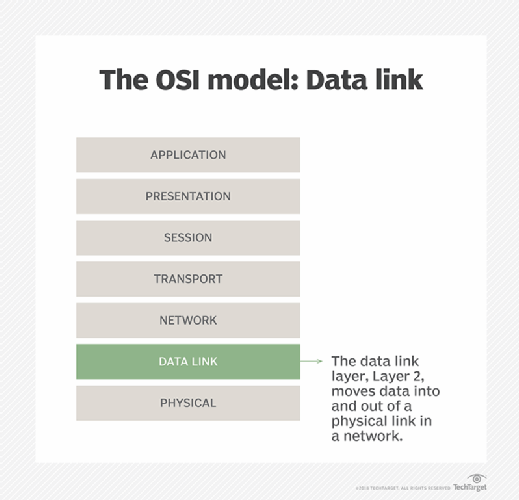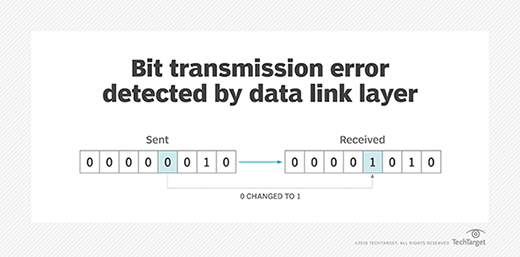What Are The Primary Functions Of The Data-link Layer?
What is the data link layer?
The data link layer is the protocol layer in a program that handles the moving of data into and out of a physical link in a network. The data link layer is Layer 2 in the Open up Systems Interconnection (OSI) architecture model for a set of telecommunication protocols.
Information bits are encoded, decoded and organized in the data link layer, before they are transported every bit frames between two next nodes on the same LAN or WAN. The data link layer too determines how devices recover from collisions that may occur when nodes try to transport frames at the same fourth dimension.
The data link layer has two sublayers: the logical link control (LLC) sublayer and the media access control (MAC) sublayer.
As described past the IEEE 802 LAN specification, the role of the LLC sublayer is to control data catamenia amongst diverse applications and services, too every bit provide acknowledgement and mistake notification mechanisms. The LLC sublayer can then talk to a number of IEEE 802 MAC sublayers, which control access to the concrete media for ship. It is also responsible for the physical addressing of frames.
2 common MAC layer types include Ethernet and 802.11 wireless specifications.
Functions of the information link layer
The data link layer has 3 main functions:
- It handles problems that occur as a result of bit manual errors.
- It ensures data flows at a footstep that doesn't overwhelm sending and receiving devices.
- It permits the transmission of data to Layer 3, the network layer, where information technology is addressed and routed.

Data link layer and fault detection
The data link layer ensures an initial connectedness has been set up, divides output data into data frames and handles the acknowledgements from a receiver that the information arrived successfully. It likewise ensures incoming information has been received successfully by analyzing flake patterns at special places in the frames.
If an fault occurs, the data link layer notifies college-level protocols that something has happened to the physical link. Frame sequencing capabilities inside the data link layer permit the receiving device to reorder frames that might have been transmitted out of sequence. The information link layer verifies the bundle is unimpaired.
The information link layer as well manages flows by enabling devices on a link to detect congestion. Nearby devices then transmit congestion information, so traffic can be rerouted appropriately.

This was last updated in October 2021
Continue Reading Nigh information link layer
- Data link layer video overview past Nicholas Andre
- What is the divergence between TCP/IP model vs. OSI model?
- Layer 3 switches explained
- Preventing Layer 2 security threats
- The OSI model layers explained: Get to know the network
Dig Deeper on Network protocols and standards
-

Ethernet
-

Class of Service (CoS)
-

Synchronous Data Link Control (SDLC)
-

Spanning Tree Protocol (STP)
What Are The Primary Functions Of The Data-link Layer?,
Source: https://www.techtarget.com/searchnetworking/definition/Data-Link-layer
Posted by: murofornew.blogspot.com






0 Response to "What Are The Primary Functions Of The Data-link Layer?"
Post a Comment